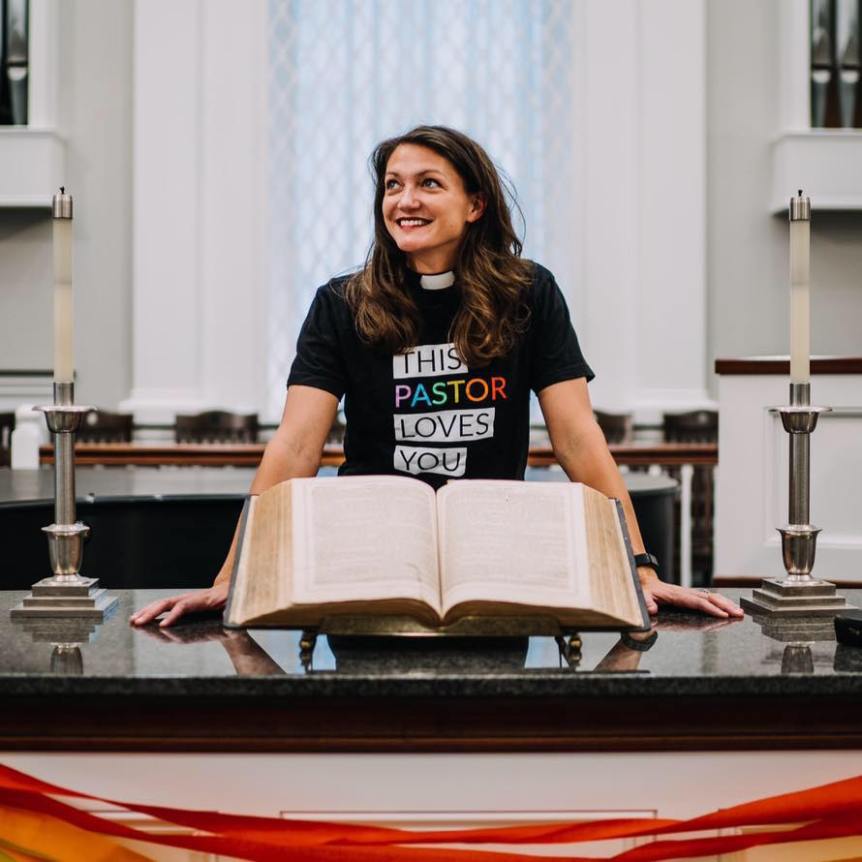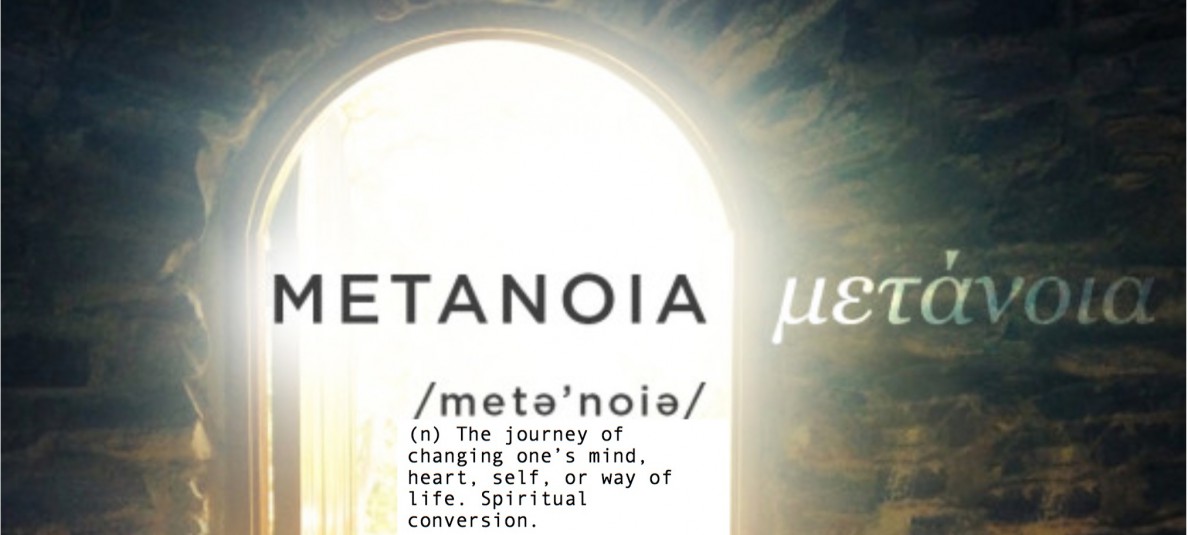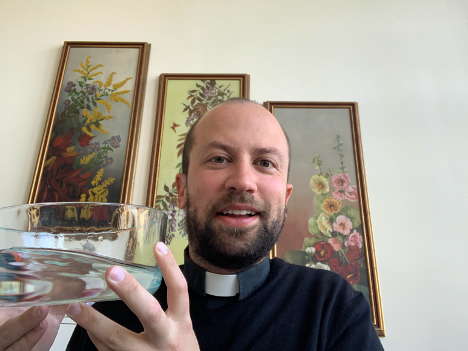Ascension: Why Do You Stand Looking Up Toward Heaven?
Luke 24:44-53
By: The Rev. Chana Tetzlaff
As I write this commentary, a growing restlessness pervades the United States. Hopes and rumors that stay at home orders will soon be lifted abound. A roiling vortex of emotion about those decisions –joy and disbelief, relief and anger, grief, fear and hope – swirl together in a complex coil. No one knows what the future will look like. No one knows, with 100% certainty, if lifting the orders will result in greater death and economic disruption, or if our lives will slowly settle back into familiar patterns of the prosperity some of us have known. Experts and authorities are at odds with one another; antithetical messages battle for supremacy. And yet, through the melee a universal question surfaces over and over again: is this the time of our restoration? Is this the time when our economic vitality will rebound? Is this the time that will force us to bridge our partisan divides and pull together? Is this the time that will catalyze our country (our kingdom), once again, to greatness?
As our church leadership thinks through what our communal life might look like in the aftermath of physical distancing, I hear the same question, and the same roiling emotions, surface: Is this the time of our restoration? Is this the time when we go back to our beloved buildings to gather together the same way we’ve always gathered, with the same experience of sacrament and space? Is this the time when people will return to the church and thus return the Church to its former role as a pillar of society? Is this the time when the Church will be restored, once again, to greatness? Yet even as we ask the question, there is some recognition that the worship traditions we cherish, and the way we’ve always practiced them, will likely have to change.
In some ways, the Church today asks Christ the same question that the disciples asked: will we be restored to our former glory? The disciples, even in the midst of their immediate, personal experience of the new thing God was doing in the Incarnation, got caught up in the religious and political expectations of their time. Expectations that the Messiah would deliver them from the yoke of Rome’s oppression, that Messiah would restore the kingdom of Israel who had experienced centuries of inter-tribal division, the destruction and desecration of her Temple, the Exile and diaspora of her people, and the fracturing of her political independence and self-governance.
Our context today faces a similar political challenge, but the hope of restoration is different. The largest age demographic in most denominations are those who are 65+, aka the Boomer generation.[i] As children in the 1950s and 60s, their experience of religious life was as the epicenter of social and civic life. Sunday school classes were bursting at the seams, churches were planting roots in flourishing suburbs, volunteerism was at an all-time high because serving on a religious committee was socially emblematic of being a good citizen. However, in the longer scope of Christian history, what our tradition considers “normal” and what we long to return to is anything but. The dominance of Christian life in the 50s was an outlying blip on the overarching span of church history. What we long to return to as normal never was the norm and, I hope, will not be the vision we hold up as our longing for the future to come.
Which is why I appreciate the scene of Jesus’s Ascension in Acts Chapter 1. I confess that, in this time of physical distancing and pandemic isolation, I hear the words of this text differently than I have before: Jesus “ordered them not to leave Jerusalem, but to wait there for the promise of the Father;” that “you will be baptized with the Holy Spirit…[and] you will receive power when the Holy Spirit has come upon you; and you will be my witnesses in Jerusalem, in all Judea and Samaria, and to the ends of the earth.”[ii] Then as Jesus ascends into heaven, I’m sure with great cloudy fanfare and divine pyrotechnics, the disciples stare after him in awe, ostensibly taking Jesus’s instructions quite literally.
While they are waiting, in verse 11, two (angelic?) messengers give them the proverbial divine slap upside the head with the question “why do you stand looking up toward heaven?” And so the disciples return to the city, where they spend many days “constantly devoting themselves in prayer” with other faithful believers. This period of prayer is followed by God fulfilling God’s promise at Pentecost, sending the Holy Spirit upon them and empowering them in language and deed to proclaim the good news of God’s love for all.
At the time of his writing, Luke’s context was not a pandemic, nor were the events global, and yet there is a global call to the work God gave the apostles, and us, to do. Which is why I confess it difficult to empathize with the preoccupation to be restored to our buildings, to what we’ve always known, and the grief at how the church must change to adapt to meet the needs of the world around us. Hasn’t it always been our mission to meet the needs of the world with God’s love and power working through our hands and our feet? Has not God constantly been doing a new thing, shaking the foundations of our human structures, boundaries, and expectations? Do we not believe that baptism is our initiation into Christ’s body and a lifelong process of transformation with the help of the Holy Spirit working in us (sanctification)? Why then, would we expect to return to what we have been instead of anticipating what God is preparing us to become?
Much of my ministry as a priest has been to encourage communities to ask themselves the hard questions of if and how they are deepening their relationship with God, if and how they are listening for and to the Holy Spirit (who, in my experience, is constantly doing a new thing and constantly pushing us out of our comfort zones), if and how they are ministering to the needs of their neighbors around them in an authentic way, if and how they are willing to change in order to become the beloved community that God envisions, that accepts and welcomes ALL people created by God in God’s image.
As much as we declare ourselves to be people of resurrection, resurrection is uncomfortable. Resurrection is hard to define, takes time to come to fruition, and never looks the same. Resurrection requires a comfort with uncertainty and the Unknown that is not an innate human characteristic, but is a skill developed over time as we are pushed into growth situations (often against our will). Resuscitation to the old life we’ve always known would be much easier and much more comfortable.
Becoming people of resurrection means helping our churches become comfortable with the unknown. It requires immense courage and adaptive leadership: diving into the wilderness, trying new things, learning from failure, and picking up and trying again. [iii] It requires all the baptized to reclaim their baptismal gifts, empowered by the Holy Spirit to continue God’s mission and ministry. Getting comfortable with the unknown means taking risks and making decisions that may not be popular with those who want to return to the status quo. But risky, daring, bold, courageous leadership is needed from every heart if the people of God are going to survive and thrive in the midst of a “foreign (read secularized, unchurched) land,” on the margins, and in a “tent of perpetual adaptation.”
These are not skills valued by an institutional structure in its death throes and resisting, with every fiber of its being, the new life it is being called into. As a bishop once said to me, “such a style of leadership is not helpful for our institution.” He’s not wrong. But when did God call the church to become an institution? The church’s call has always been to continue the mission and ministry of the Body of Christ: proclaiming the good news of God’s love, offering healing and restoration to those who seek reconciliation with God, and serving our neighbors as we would serve ourselves. This moment requires of us the difficult, messy work of creative reimagining. In order to live into the new life of resurrection, we have to die to the old self and let go of the former ways of being. Easier said than done, as our hierarchies and structures have demonstrated, and mourned, for decades now.
I do not believe that the church is dying. I do believe that the institution as we know it is dying. I do believe that religious life as we know it is changing. But I do not mourn these things. This moment, this opportunity for exercising our God-given ingenuity and creativity to rethink our spiritual growth, mission, and ministry models fills me with hope, not dread or grief, or fear. I see a higher attendance rate and far more newcomers dropping in on our online services and offerings than before, and that tells me that the world is still hungry for God’s love and God’s presence, and our ability to mediate and interpret that with meaningful and tangible means. It is my hope that this moment may indeed call us to metanoia, conversion, awakening to reclaim the essentials of our calling and mission. As a wise colleague once reminded me, God is going to do what God is going to do, with or without the Church institution. We haven’t managed to kill the church through millennia of human history, action or inaction. The Body of Christ is the faithful who remember that God has acted before, abide in the promise of Immanuel: God with us, wait expectantly and eagerly for the new life to show up in unexpected ways, boldly venture into the unknown trusting the power of the Holy Spirit, working in us, to do infinitely more than we can ask or imagine.
In his seminal work, liberation theologian Gustavo Gutierrez exhorts the church to stop looking up toward heaven, waiting for God’s return or waiting for escape from the chances and changes of this life, and instead to focus on proclaiming the good news of God’s love in the here and now, doing our part in helping to usher in God’s kingdom of justice, love, reconciliation, and peace with the people beside us, part of the church or not.[iv] It is time for us to get evangelical, if you will, by which I mean reclaiming that word to its true meaning – proclaiming the good news of God’s love. To reinforce words with action, to do what we profess to believe. So what is the work of the Church in this time? There are several things that happen in this text that we can put to use as we creatively reimagine our models for mission and ministry:
Teach:
An essential part of the work of the Church is to give people a framework for interpreting and making sense of the events of their lives. Theology is important; how we understand God and what we believe about God shapes how we act in relation to God’s promises. Preach the message you discern that the Holy Spirit wants her people to hear, and teach boldly in a way that fosters spiritual growth. Challenge clichés, sit with the difficult questions and uncomfortable moments when questions can’t be answered, listen for the insights, wisdom and passion of the people you are teaching and learn from them, too.
Trust the promise:
Remember God’s good action and promises fulfilled in the past, and watch expectantly for God’s power to pop up in unexpected times, places, and people. God is constantly drawing outside the lines, calling us beyond our boundaries, asking us to meet Her in the wilderness moments of our lives, bringing forth streams in the desert and making crooked ways straight again, leveling high places and lifting up the lowly.
Receive the power of the Holy Spirit:
Say these sentences aloud, every day.
“God called me for a time such as this.”
“God gave me gifts to help build me up and to build up the people around me.”
“God gives me power and help to accomplish the purposes God intends for me.”
“God will work through whatever I offer, large or small, to do infinitely more than I can ask or imagine.”
Witness:
Tell others how God has shown up in your life. How has God healed or restored you? Where has God helped change your heart and renew your mind because of your participation in a faith community? Ask yourself why your relationship with God and God’s people is important to you, why it matters to you to get up and go to church or online worship each week? After you take time to reflect, write a Facebook post or tweet on Twitter giving thanks for a spiritual blessing you have discovered or a person who has helped you recognize God’s action in your life.
Finally, and most importantly, Pray:
The first thing the disciples did after this scene was to “constantly devote themselves to prayer.” They did this gathered together and, I presume, also on their own. Prayer in and for the power of the Spirit is the essential foundation for the tasks of ministry. It is not enough to simply experience Christ’s presence or know the words of scripture to be an effective minister; our tasks will simply be “doing” if we are not also grounded in the “being” of God’s presence. Prayer is as simple as inviting God to fully participate in all that we do, but there are also specific things everyone can pray together in unity for at this time:
- For our church leaders to be given courage and confidence to have hard, truthful conversations, to make difficult decisions, to let go of the fears that create barriers to God’s mission of love and reconciliation.
- For God to show us the people and needs God wants us to minister to, who need to hear the message of justice, reconciliation, and peace of God’s love.
- For God to show us the gifts for ministry present in ourselves, in our faith community, in people we might not expect that can be asked to help us creatively reimagine how God would have us fulfill God’s purposes.
- Or together to pray this prayer: Almighty God, whose blessed Son our Savior Jesus Christ ascended far above all heavens that he might fill all things: Mercifully give us faith to perceive that, according to his promise, he abides with his Church on earth, even as we grieve the loss of power and influence we have enjoyed, even as everything we have known to be “normal” changes around us, even as “the way we have always done it” gives way to experimentation and failure and new ways of being, even to the end of the ages; through Jesus Christ our Lord, who lives and reigns with you and the Holy Spirit, one God, in glory everlasting. Amen.
These are not new and innovative tools, but they are essential to braving the unknown with courage, gaining clarity in discernment, and getting our heads out of the clouds into the work God has given us to do right in front of us. I hope our faithful vision will be open, even amidst change and uncertainty, to the new thing God is doing in our circumstances, and the new life that will come out of it. At the root of apostolic faith (and the word, apostle) is an expectation to be sent out, to the ends of the earth, but also in our own communities to proclaim God’s love, God’s power, God’s justice, and God’s peace. The world is hungry for those promises. What are we waiting for?
May the God who shakes heaven and earth, whom death could not contain, who lives to disturb and heal us, bless you with power to go forth and proclaim the gospel of new life amidst the fear of death.[v]
[i] https://www.pewforum.org/religious-landscape-study/religious-denomination/episcopal-church/
[ii] Acts 1:4-5, 8. NRSV translation.
[iii] For a great resource on adaptive leadership, see Tod Bolsinger’s book “Canoeing the Mountains: Christian Leadership in Uncharted Territory.”
[iv] Gutierrez, Gustavo. A Theology of Liberation.
[v] https://www.fortworthtrinity.org/download_file/view/873/

The Rev. Chana Tetzlaff is an Episcopal priest with over two decades of leadership experience that includes public advocacy, social justice, teaching for transformative change, and interfaith collaboration. She currently serves as the Associate Rector at St. Christopher’s in Carmel, Indiana. Her great joy in ministry is helping people of faith ask the hard questions of life and God, to discover that “it is in the shelter of each other that the people live” (old Irish proverb). Or, as Jesus said it, we truly show our love for God when we show care and concern for every person we encounter, like us or not. In her spare time, Chana can be found fulfilling her bucket list items before she turns 65 (so far 23/75!), playing D&D, dancing Lindy Hop, or exploring local activities and events with her husband, TJ, and their dog-children, Molly and Momo.












